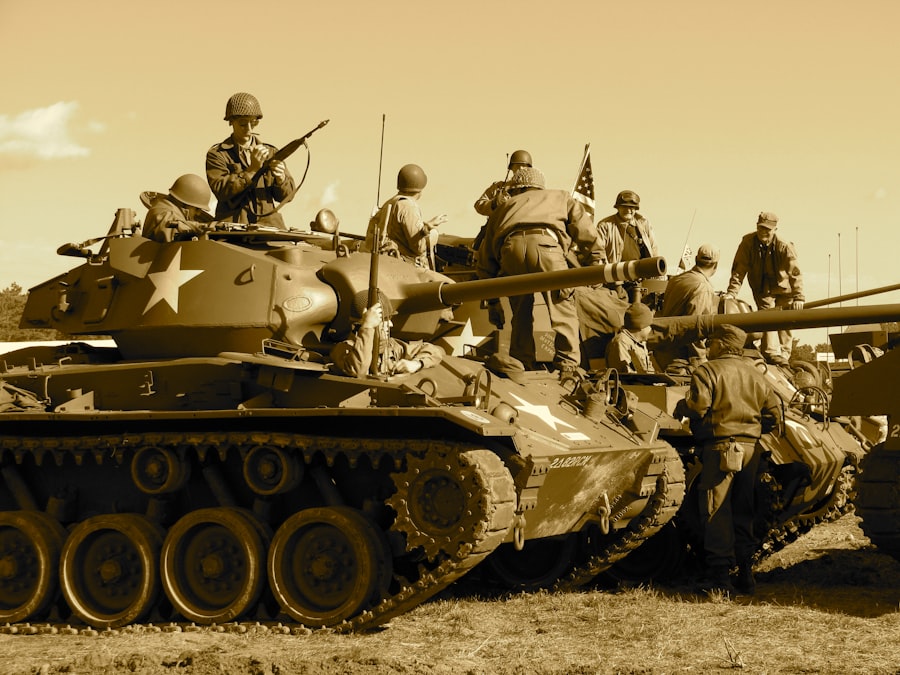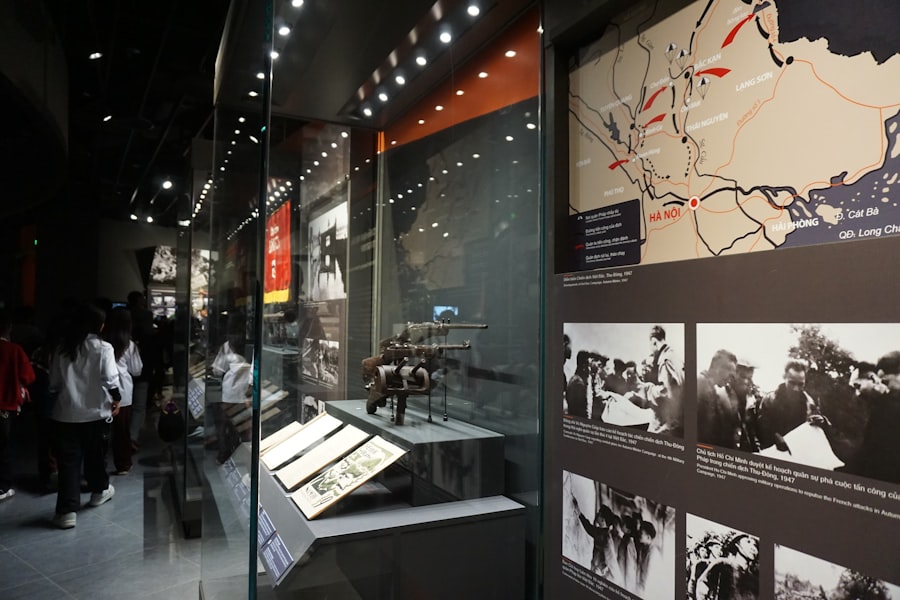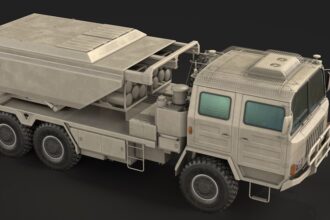Military strategies encompass the comprehensive plans and methodologies employed by armed forces to achieve specific objectives during conflicts. These strategies are not merely a collection of tactics but rather a holistic approach that integrates various elements, including logistics, troop movements, and resource allocation. The essence of military strategy lies in its ability to adapt to the ever-changing dynamics of warfare, which can be influenced by political, social, and technological factors.
Understanding military strategies is crucial for both military leaders and scholars, as it provides insights into the successes and failures of past campaigns and informs future operations. The study of military strategies extends beyond the battlefield; it involves a deep analysis of historical precedents, cultural contexts, and the psychological dimensions of warfare. As nations evolve and conflicts become more complex, the need for innovative strategies becomes paramount.
This article aims to explore the multifaceted nature of military strategies, examining their historical evolution, the significance of analysis, and the various components that contribute to successful military operations.
Key Takeaways
- Military strategies have evolved over time and are crucial for achieving success in warfare.
- Historical overview of military tactics provides valuable insights into the development and application of military strategies.
- Analyzing military strategies is important for understanding the strengths and weaknesses of different approaches.
- The WAR Room plays a critical role in military analysis by providing a centralized space for decision-making and strategic planning.
- Understanding the decision-making process in warfare is essential for evaluating the effectiveness of military strategies.
Historical Overview of Military Tactics
Throughout history, military tactics have undergone significant transformations, shaped by technological advancements and shifts in societal values. From the phalanx formations of ancient Greece to the trench warfare of World War I, each era has introduced unique approaches to combat. The evolution of military tactics reflects not only the changing nature of warfare but also the strategic thinking of military leaders who sought to maximize their forces’ effectiveness.
For instance, the introduction of gunpowder revolutionized battlefield engagements, leading to the decline of heavily armored knights and the rise of infantry units equipped with firearms. The Napoleonic Wars marked a pivotal moment in military tactics, as Napoleon Bonaparte’s innovative use of mass conscription and rapid troop movements demonstrated the power of mobility and coordination. His strategies emphasized the importance of decisive engagements and the element of surprise, principles that continue to influence modern military thought.
As warfare progressed into the 20th century, the advent of mechanized warfare during World War II further transformed tactics, with combined arms operations becoming a hallmark of successful campaigns. The historical overview of military tactics reveals a continuous interplay between innovation and adaptation, underscoring the necessity for military leaders to remain vigilant and responsive to emerging challenges.
Importance of Analyzing Military Strategies

Analyzing military strategies is essential for understanding the complexities of warfare and the factors that contribute to success or failure in military campaigns. This analysis allows military leaders and strategists to learn from past experiences, identify patterns, and develop frameworks that can be applied to future conflicts. By studying historical battles and campaigns, one can discern the underlying principles that govern effective military operations, such as the importance of logistics, intelligence, and morale.
Moreover, analyzing military strategies fosters critical thinking and encourages a deeper appreciation for the art of war. It enables military professionals to evaluate their own strategies against those employed by adversaries, facilitating a more nuanced understanding of competitive dynamics. In an era where conflicts are increasingly multifaceted and unpredictable, the ability to analyze and adapt strategies becomes a vital skill for military leaders.
This analytical approach not only enhances operational effectiveness but also contributes to informed decision-making at all levels of command.
Role of the WAR Room in Military Analysis
| Role of the WAR Room in Military Analysis |
|---|
| Facilitates real-time decision making |
| Provides a centralized location for data analysis |
| Allows for collaboration among military leaders |
| Supports strategic planning and tactical execution |
| Enables rapid response to changing situations |
The WAR Room serves as a central hub for military analysis and strategic planning, where commanders and their staff gather to assess ongoing operations and devise future plans. This environment is characterized by real-time data analysis, collaborative discussions, and scenario planning, all aimed at enhancing situational awareness and decision-making capabilities. The WAR Room is equipped with advanced technology that allows for the visualization of battlefield dynamics, enabling leaders to make informed choices based on current intelligence.
In addition to its technological capabilities, the WAR Room fosters a culture of collaboration among military personnel from various branches and specialties. This interdisciplinary approach encourages diverse perspectives and innovative solutions to complex problems. The synergy created within the WAR Room is crucial for developing comprehensive strategies that account for multiple variables in warfare.
As conflicts become more intricate, the role of the WAR Room in facilitating effective analysis and strategic planning cannot be overstated.
Understanding the Decision-Making Process in Warfare
The decision-making process in warfare is a complex interplay of information gathering, analysis, and judgment under pressure. Military leaders must navigate a myriad of factors, including intelligence reports, troop morale, logistical constraints, and political considerations. Effective decision-making requires not only a thorough understanding of these elements but also the ability to anticipate potential outcomes and adapt strategies accordingly.
The fog of war—characterized by uncertainty and chaos—complicates this process further, necessitating a high degree of flexibility and resilience among commanders. Moreover, psychological factors play a significant role in decision-making during warfare. Leaders must contend with their own biases and emotions while also considering how their decisions will impact troop morale and public perception.
The ability to remain calm under pressure and make rational choices is paramount in high-stakes situations. Understanding the intricacies of decision-making in warfare equips military leaders with the tools necessary to navigate challenges effectively and execute successful operations.
Case Studies of Successful Military Campaigns

Examining case studies of successful military campaigns provides valuable insights into effective strategies and tactics employed throughout history. One notable example is the D-Day invasion during World War II, where Allied forces executed a meticulously planned operation that involved deception tactics, extensive logistical coordination, and overwhelming air support. The success of this campaign hinged on thorough preparation and an understanding of enemy vulnerabilities, ultimately leading to a turning point in the war.
Another compelling case study is the Gulf War in 1991, where coalition forces utilized advanced technology and precision strikes to achieve rapid success against Iraqi forces. The integration of air power with ground operations exemplified modern warfare’s emphasis on speed and efficiency. By analyzing these case studies, military strategists can identify key principles that contributed to success—such as adaptability, innovation, and effective communication—that remain relevant in contemporary conflicts.
Analyzing the Use of Technology in Modern Warfare
The role of technology in modern warfare cannot be overstated; it has fundamentally altered how conflicts are conducted and strategies are formulated. From drones to cyber warfare capabilities, technological advancements have introduced new dimensions to military operations. The integration of information technology has enhanced situational awareness, allowing commanders to make informed decisions based on real-time data analysis.
Moreover, technology has transformed traditional concepts of warfare by enabling asymmetric engagements where smaller forces can leverage advanced capabilities against larger adversaries. The use of unmanned aerial vehicles (UAVs) for reconnaissance and targeted strikes exemplifies this shift toward precision warfare. However, reliance on technology also presents challenges; cyber vulnerabilities can undermine operational security, necessitating a balanced approach that combines technological prowess with traditional military principles.
Examining the Psychological and Emotional Aspects of Warfare
Warfare is not solely a physical endeavor; it encompasses profound psychological and emotional dimensions that influence both combatants and civilians alike. The psychological impact of combat can lead to conditions such as post-traumatic stress disorder (PTSD) among soldiers, affecting their performance and well-being long after conflicts have ended. Understanding these psychological aspects is crucial for developing effective support systems for veterans and ensuring troop readiness during operations.
Additionally, emotional factors play a significant role in shaping public perception and support for military actions. Leaders must consider how their decisions resonate with both domestic audiences and international stakeholders. The narratives constructed around conflicts can influence political outcomes and affect future military engagements.
By examining these psychological dimensions, military strategists can better prepare for the multifaceted challenges posed by modern warfare.
Evaluating the Impact of Geography and Terrain on Military Operations
Geography and terrain are critical factors that significantly influence military operations. The physical landscape can dictate troop movements, supply lines, and overall strategy. For instance, mountainous regions may hinder mobility while providing natural defensive positions; conversely, open plains may favor large-scale maneuvers but expose forces to enemy fire.
Understanding these geographical nuances allows military leaders to tailor their strategies accordingly. Historical examples abound where geography played a decisive role in shaping outcomes. The Battle of Gettysburg during the American Civil War illustrates how terrain influenced tactical decisions; Union forces leveraged high ground to gain a strategic advantage over Confederate troops.
Similarly, during World War II’s Eastern Front campaigns, vast distances and harsh weather conditions posed significant challenges for both Axis and Soviet forces. Evaluating geography’s impact on military operations underscores its importance in strategic planning.
The Role of Intelligence and Surveillance in Military Strategies
Intelligence gathering and surveillance are foundational components of effective military strategies. Accurate intelligence allows commanders to make informed decisions based on an understanding of enemy capabilities, intentions, and movements. The integration of advanced surveillance technologies—such as satellite imagery and reconnaissance drones—has revolutionized how militaries collect information about adversaries.
Moreover, intelligence analysis plays a crucial role in shaping operational plans. By synthesizing data from various sources—human intelligence (HUMINT), signals intelligence (SIGINT), and imagery intelligence (IMINT)—military leaders can develop comprehensive situational assessments that inform strategic choices. The importance of intelligence cannot be overstated; it serves as both a shield against surprise attacks and a sword that enables proactive engagement with adversaries.
Lessons Learned from Military Strategy Analysis
The analysis of military strategies offers invaluable lessons that extend beyond the confines of warfare itself. By studying historical precedents, evaluating decision-making processes, and understanding the interplay between technology, psychology, geography, and intelligence, military leaders can develop more effective approaches to conflict resolution. The lessons learned from past campaigns inform contemporary practices while also preparing future generations for the complexities they may face.
Ultimately, successful military strategy hinges on adaptability—the ability to learn from experience while remaining responsive to evolving circumstances. As conflicts continue to shape global dynamics, the importance of rigorous analysis in developing sound military strategies will remain paramount. Through this lens, one can appreciate not only the art of war but also its profound implications for peacebuilding and international relations in an increasingly interconnected world.




